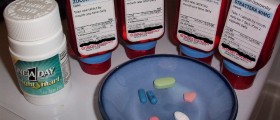
Glaucoma is a name for a group of disorders that affect the optic nerves of the eye, damaging them and leading to blindness. It is the second most common cause of blindness in the world.
Types of glaucoma
The human eye is a very sensitive organ, comprising of nerves and blood vessels and it also contains an aqueous humor that lubricates and moisturizes it. One of the important purposes of the aqueous humor is to regulate the pressure within the eye. In glaucoma, there is a problem with it. It becomes trapped inside or it leaks excessively, leading to disturbances related to the pressure. The pressure builds up, damages the nerves and eventually leads to blindness.
There are different types of glaucoma and each one has different causes. Primary congenital glaucoma is present since the birth, in form of structural abnormalities or other problems that lead to pressure problems. One of the signs of this type of glaucoma in children is sensitivity to light and watery eyes.
Open angle or chronic glaucoma is the most common type of glaucoma. In this type of glaucoma, the liquid leaks slowly from the angle between the iris and the cornea. In closed angle or acute glaucoma the iris blocks the angle of drainage, which results in liquid build-up.
In normal tension glaucoma, the problem does not result from the abnormal pressure within the eye and the damage to the nerves is of a different origin.
In secondary glaucoma, the damage to the nerves resulted from an injury or trauma. It can also result from another disease.
Symptoms and treatment for glaucoma
The problem with glaucoma is that in early stages it does not exhibit any significant or clear symptoms. By the time the symptoms occur, it may be too late to repair the damage. Some of the symptoms include blurred vision, sensitivity to light, fainting, nausea and vomiting.
As for the treatment, it depends entirely on the specific cause of glaucoma. It is very important to start the treatment as early as possible, otherwise there may be some permanent damage to the eye and even blindness. The treatment may include epinephrine, prostaglandins or parasympathomimetics, which reduces the secretion of aqueous humor and thus reduces the pressure too.
The treatment may also come in form of eye drops. Finally, there is eye surgery that drains the fluid and remodels the tissues so the fluid can drain normally on its own, maintaining normal pressure.

















Your thoughts on this
Loading...